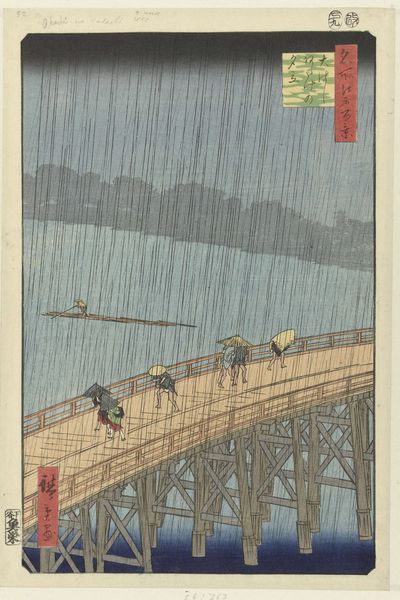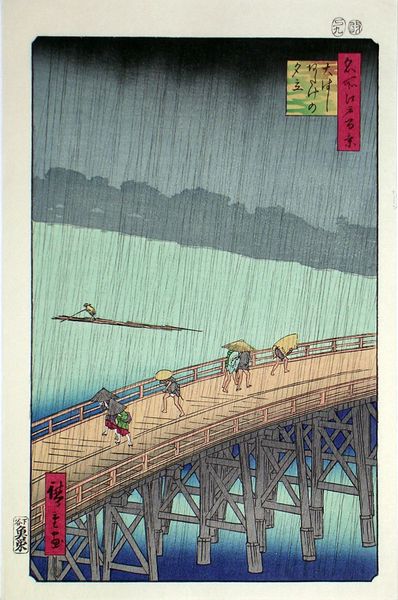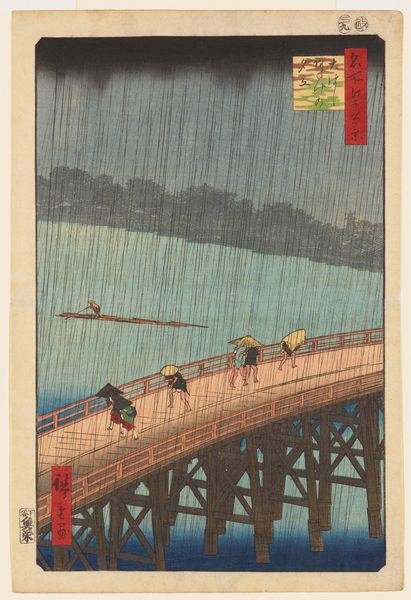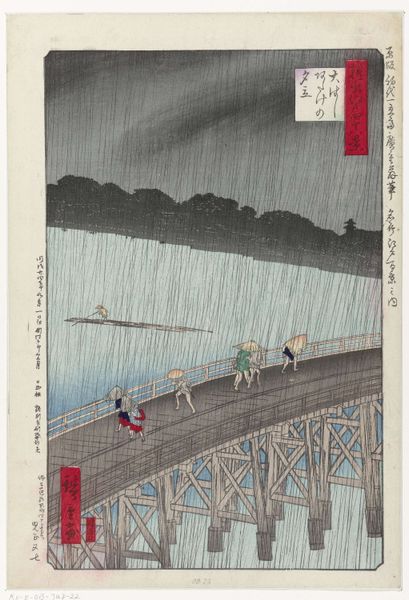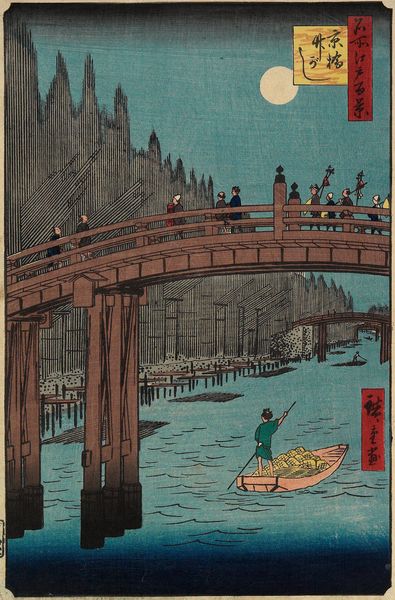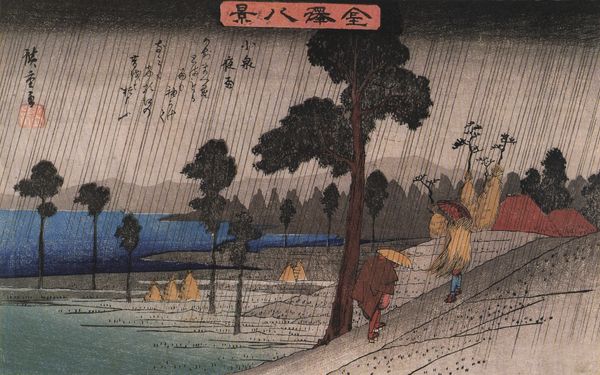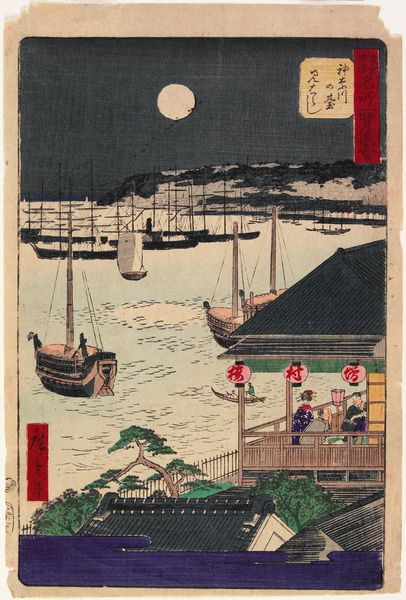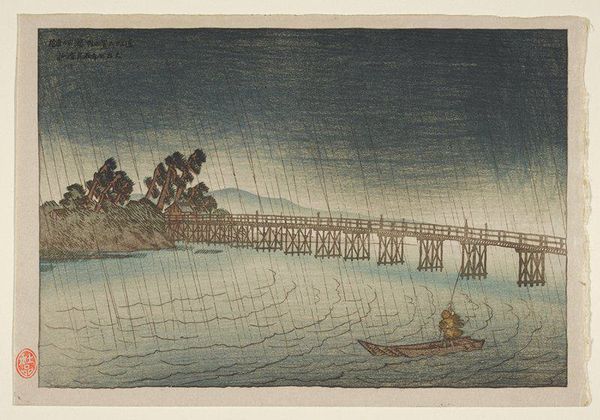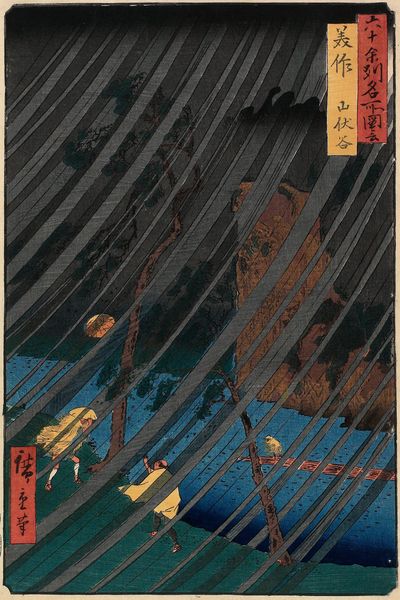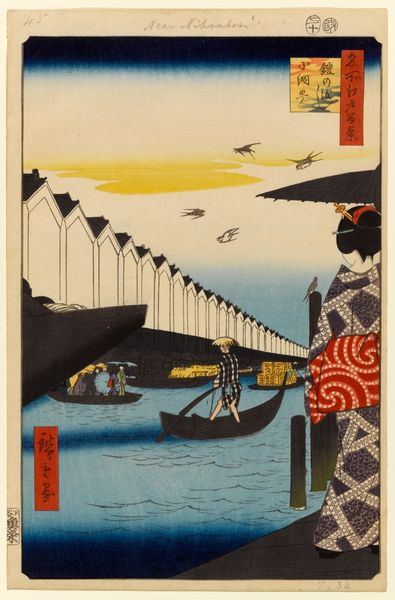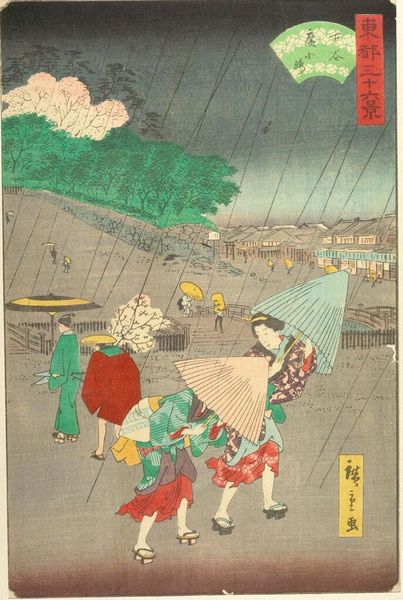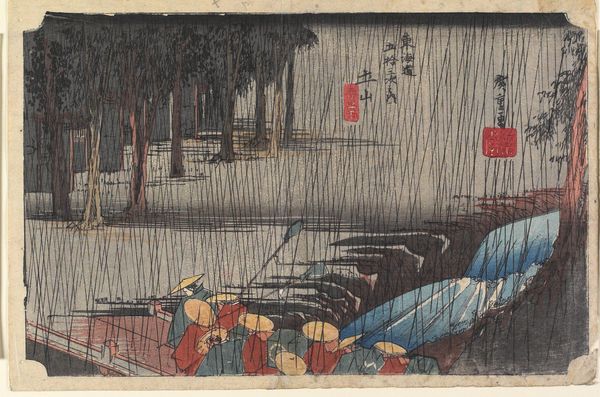
Evening Shower over Ōhashi Bridge and Atake Possibly 1857 - 1859
0:00
0:00
print, ink
#
water colours
# print
#
street art
#
landscape
#
ukiyo-e
#
ink
#
line
#
cityscape
Dimensions: 14 1/8 × 9 5/8 in. (35.9 × 24.4 cm) (sheet, vertical ōban)
Copyright: Public Domain
Editor: This is "Evening Shower over Ōhashi Bridge and Atake" by Utagawa Hiroshige, likely from the late 1850s. It’s a print made with ink and watercolor, and there's something about how the rain is depicted with these strong, vertical lines that gives the scene so much drama. How would you approach an interpretation of this work? Curator: Considering Hiroshige's ukiyo-e print, I’m drawn to analyze it through the lens of its production. Think about the collaborative labor required – the artist's design, the woodblock carver's skill, the printer's meticulous layering of colors. This wasn't solitary creation; it was a complex system. Editor: So, it's not just about Hiroshige's vision, but the entire industry supporting these prints? Curator: Exactly. Consider the materials too: the specific types of wood used for the blocks, the sources of the ink and pigments, their trade routes. The materiality reveals a network connecting local resources to a global market. Ukiyo-e prints became highly sought after in the West. Editor: That’s true, this print demonstrates “Japonisme”, so it was indeed popular! I guess I had not thought about it being a collaborative undertaking or a product of international trade and cultural consumption before. Curator: Think about the subject matter too. This bridge facilitates trade and movement of people, mirroring the flow of goods depicted in the print itself. How do you view that relationship now? Editor: The bridge as a symbol of the movement and dissemination, very much mirroring the work itself! Thank you for the insight! Curator: Gladly. It's a good reminder that even seemingly simple landscapes are enmeshed in complex material and social realities.
Comments
No comments
Be the first to comment and join the conversation on the ultimate creative platform.
